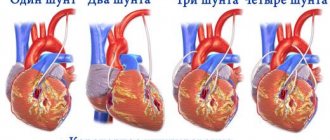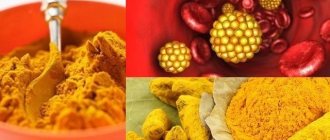Chocolate is widely known not only for its taste, but also for its beneficial effects on health. It perfectly tones the muscular and nervous system, strengthens the body's defenses. But this delicacy may not be so useful for everyone.
People with hyperlipidemia always look at any sweets with caution and caution, as they can cause deterioration in health. How do our beloved chocolate and cholesterol interact? How safe is it to consume? Let's try to figure this out.
Useful properties and composition
Depending on the composition and preparation technology, the following types of chocolate differ:
- Bitter - made from cocoa butter and cocoa beans. The percentage of cocoa powder in it is from 60 to 75.
- Black - is a type of bitter, but with added sugar and a lower content of cocoa powder (45-50%).
- Dairy - made from the same ingredients, but with the addition of sugar and dairy products. Due to this, it is sweeter and melts gently in the mouth. Cocoa content is about 30%.
- White - it is based on cocoa butter, dairy products (most often milk powder), sugar and vanillin. Cocoa powder is not included in the recipe at all.
The varieties listed are porous, diabetic (with sweeteners) and other subtypes of chocolate products. According to the classic recipe, chocolate consists of 6-7% proteins, 38-40% fats, 6-63% carbohydrates. Chocolate is rich in a whole range of beneficial substances:
- Alkaloids. The most famous on their list is theobromine. When they enter the human body, they activate the production of hormones. Among them contains the neurotransmitter serotonin, which increases the stability of a person’s psychological state. It’s not for nothing that serotonin is known as the “happiness hormone” - it is the universal anti-stress, the conductor of a good mood, sound sleep and homeostasis (self-regulation of the body).
- Antioxidants. These substances are designed to rejuvenate the cells and tissues of organs, provide a protective function on blood vessels, strengthen and cleanse their walls. Actually, this mechanism of action of antioxidants answers the question of how chocolate affects us with cholesterol.
- Magnesium stimulates and strengthens the body's immune status. Its significant role is also in the normal functioning of the cardiovascular and nervous systems - it triggers the processes of transmission of nerve impulses for muscle contraction and relaxation. It regulates metabolic processes in cells and metabolism in general. The content in dark varieties is twice as high as in dairy varieties.
- Calcium and Fluoride strengthen bone tissue and tooth enamel.
- Phosphorus tones brain activity.
- Potassium is used by the body during the functioning of the muscular system.
- Vitamins of group B, A, D, E. They increase the body's reactivity, immunity, and have a beneficial effect on tissues, digestive processes and homeostasis.
- Copper. An ordinary bar of dark cocoa product contains about 34% of the daily dose of this element for humans. In the body it is used to form neurotransmitters and collagen.
The bitter type of chocolate contains a higher concentration of nutrients - trace elements, minerals and cocoa. White and milk are rarely used for medicinal purposes, since they contain many substitutes and additional substances - preservatives, fats, sugar, milk, which in themselves are not allowed for every sick person.
Can I have chocolate after gallbladder removal?
According to diet No. 5, developed by M. Pevzner (https://style.rbc.ru/health/5fcf6a989a7947638b794b18), chocolate is included in the list of prohibited sweets for gallbladder diseases. But is it possible to enjoy chocolate after it has been removed? The answer for those with a sweet tooth is disappointing.
After surgery, patients have to follow a diet. There is also no place for chocolate - neither dark nor milk. Only by avoiding harmful foods will it be possible to prevent the formation of new stones in the ducts and other complications associated with changes in the properties of bile.
Is it possible to eat chocolate if you have high cholesterol?
100 g of chocolate contains approximately 35 g of fat - almost half of the daily nutritional intake of a healthy person. But cholesterol enters the body in fats. It turns out that chocolate increases cholesterol? No, it does not increase it, since the cocoa beans from which this sweet delicacy is made contain fats only of plant composition and origin, and compared to animal fats, the concentration of cholesterol in them is insignificant. Therefore, chocolate can be consumed if you have high cholesterol , but only of a certain type .
Let's understand the composition
Research has shown that dark chocolate may be good for your heart. It is made from cocoa beans, and they are rich in flavonoids (flavanols to be precise), which are antioxidants. Antioxidants counteract oxidation, a harmful chemical reaction that occurs in our bodies. Thus, the oxidation of “bad” cholesterol contributes to the development of cardiovascular diseases (here it should be noted that “bad” cholesterol is not so bad, it is involved in important processes for the body, but it becomes harmful precisely when oxidized).
Keep in mind that chocolate is not a low-calorie food. Frequent consumption can lead to obesity, which in itself is already a risk factor for heart disease. Therefore, some quality dark chocolate (no more than 50 grams daily) and a healthy diet and lifestyle can be good for your heart.
High-quality chocolate contains large amounts of cocoa butter, which is cholesterol-free because it is extracted from cocoa beans. Cocoa butter contains three types of fatty acids:
- palmitic – saturated fat (in small quantities);
- stearic – a saturated fat that does not affect cholesterol levels;
- Oleic is a monounsaturated fat that can protect us from many diseases, including cardiovascular disease.
Which chocolate to choose if you have high cholesterol
natural dark chocolate can be considered absolutely harmless . It has a much higher content of pure cocoa powder. Chocolates and other products made from white and milk chocolate do not provide any pronounced beneficial properties and, on the contrary, contribute to an increase in cholesterol, due to the abundance of all kinds of additives and fillers.
Nutritionists and other specialists, based on a number of studies, believe that dark chocolate increases the concentration of good cholesterol - HDL (high-density lipoproteins), and at the same time reduces the harmful fraction of cholesterol - LDL (low-density lipoproteins).
To achieve the effect, eat about 50 g of dark chocolate per day . People who prefer white varieties, but have problems with cholesterol balance, should change their preferences by adding dark varieties to their diet and eliminating dairy ones.
Particular attention should be paid to the quality of the purchased product. When purchasing, you should pay attention to the description of the composition. The natural product should not contain thickeners or stabilizers. The hardness and fragility of the consistency indicates the integrity of the manufacturer and the fact that such a chocolate bar will certainly benefit you.
Only chocolate that contains at least 70 percent cocoa is healthy.
It is most often recommended to eat dark chocolate that contains at least 70 percent cocoa to reap the maximum health benefits. And the darker the chocolate, the higher its antioxidant content. However, in a study that lasted 18 weeks, those who ate chocolate with 50 percent cocoa experienced significant reductions in systolic and diastolic blood pressure.
The effect of cocoa on cholesterol levels
Cocoa contains the following types of fats: oleic fatty acid (about 40%), stearic (35-37%), palmitic (24-30%) and linoleic (less than 5%) acids. The first of these, oleic FA (fatty acid), is a healthy type of fat. It lowers cholesterol and improves blood composition. Despite the smallest percentage, linoleic acid is very valuable in cocoa beans. It is among the essential, but is not produced by the body and can only come to us with food.
Also, dark chocolate contains large quantities of flavonoids, which are active antioxidants. They strengthen the vascular endothelium (their wall on the inside of the lumen), reduce blood viscosity and reduce the risk of developing atherosclerosis . Vitamins A, D, E, group B also play a role in solving cholesterol problems. They, along with microelements, work at the cellular and molecular level and heal the body at the deepest level.
A little chemistry
In the mid-1990s, when the first studies on chocolate and cholesterol were conducted, nutritionists did not recommend this product. However, it turned out that chocolate was no worse than other high-carbohydrate foods in this regard. In addition, this confectionery product, according to the latest scientific data, may even be useful.
In the mid-1990s, researchers had to figure out why foods containing saturated fat, namely stearic acid (which, as stated above, is found in chocolate) would not lead to unhealthy changes in blood cholesterol levels like other saturated fats.
First, let's find out what a saturated fatty acid is, or fat for that matter.
First of all, fat is oil and oil is fat. There is only one difference: fat remains solid at room temperature, while oil becomes liquid. They are also similar at the molecular level. Fatty acids are long chains of carbon and hydrogen atoms with a carboxylic acid at the end. The number of carbon and hydrogen atoms in a fatty acid dictates many of its properties, from its taste to how well it dissolves in water and whether it is a solid or liquid.
If all the carbon atoms are connected by single bonds (for example, in stearic and myristic acids), it is a saturated fatty acid. If the molecule has one double bond, it is a monounsaturated fat; if there are two or more double bonds, as in linoleic acid, it is a polyunsaturated fat.
In general, mono- and polyunsaturated fatty acids (or simply fats and oils) are much healthier for the body than saturated fats. The latter, as a rule, raise the level of “bad” cholesterol and sometimes reduce the level of good cholesterol. Apparently, a fatty acid with 18 carbon atoms breaks the general rule.
Stearic acid, an 18-carbon saturated fat, has been shown to lower plasma total cholesterol and "bad" cholesterol (but also good cholesterol). Using the formulas above, you can see how stearic acid contained in chocolate differs from other fatty acids.
Rules for consuming chocolate if you have high cholesterol
A tasty and beloved product, which came to our attention today, must be consumed with caution, despite the breadth of its beneficial properties. Like any other substance, it has a number of contraindications . Depending on the variety:
- Dairy products contain a high number of simple carbohydrates and therefore are not recommended for those who are overweight.
- Diabetes. People with this disease need to eliminate all sugar-containing foods from their diet. Only dark chocolate is not dangerous - it is a dietary product with a low glycemic index.
- Allergic reactions.
- Due to their action as an activator on the nervous system, chocolate products are not indicated for insomnia and sleep disorders.
- During pregnancy, frequent consumption of sweet foods can lead to unnecessary excess weight, which can negatively affect the growth of the fetus and the condition of the mother of the unborn child, so during this period it is recommended to consume chocolate products in minimal quantities.
Research by experts says that chocolate with a cocoa content above 60% has beneficial anti-cholesterol properties. High-quality dark varieties not only restore physiological cholesterol levels, but also normalize the functioning and condition of many systems of our body.
Can I have chocolate after a caesarean section?
On the first day after a caesarean section, obstetricians recommend completely abstaining from food and drinking more - still bottled water (no more than one and a half liters per day). At this time, it is important not to burden the intestines and not provoke flatulence. Therefore, you won’t be able to treat yourself to a slice of chocolate immediately after waking up from anesthesia. And it’s unlikely that you’ll want to. On days 2 and 3, nutrition is based on low-calorie and dietary foods, which chocolate again does not include. Low-fat chicken or beef broth, low-fat cottage cheese, steamed vegetable cutlets, baked apples without sugar and cinnamon - nutrition after a cesarean section should be varied and nutritious.
If after a caesarean section a woman in labor plans to breastfeed her baby, then chocolate as a strong allergen is strictly prohibited for her. If the baby is transferred to artificial feeding, then the woman can return to her usual diet no sooner than the stitches are removed and permission is received from the doctor.
Can diabetics have chocolate?
Dark chocolate is not dangerous for diabetics, since it is a dietary product: it has a low glycemic index, it does not cause a rapid rise in glucose and an equally rapid release of insulin.
By eating 50-60 g of treats per day, it is impossible to harm your figure and health. The components of such sweets increase insulin resistance, reducing the risk of developing type 2 diabetes. An experiment with checking blood glucose levels when consuming different types of chocolate bars - shown in this video
How many carbohydrates does a 100 g bar contain? You can read about this on the packaging. In its bitter variety there is less than 0.1% sugar, in 70% dark there is more sugar, in milk and porous types of cocoa there is even less, and more than half of sugar: 52-57%. You can eat no more than 25 g of this delicacy per day. Is the product good for hypertensive patients?
The bitter variety of chocolate products lowers blood pressure. According to statistics, lovers of this type suffer from pathologies of the cardiovascular system less than those who do without the joy of chocolate.
Austrian researchers found that dark varieties lower blood pressure, since they contain a flavonol substance with an effect similar to medications for hypertension. It enhances the production of nitric oxide, which helps dilate arteries, and increases blood flow in the liver.
A survey of 114 thousand patients confirmed that those who eat more of this type of chocolate reduce the risk of coronary artery disease by 37% and stroke by 29%.
Possibilities of cocoa beans
What characteristics allow this product to be included in the rations of special forces soldiers, climbers, pilots, submariners, polar explorers, and astronauts? The unique composition of the chocolate bar is not an advertising gimmick: cocoa beans contain a special component – theobromine, which in Latin means “food of the gods”.
The substance creates conditions for the synthesis of endorphins - happiness hormones that lift your spirits.
The product also contains magnesium, which strengthens memory, helps overcome stress, improves immunity, as well as calcium to strengthen bone tissue, phosphorus, which is involved in the formation of the nervous system, fluorine to protect teeth and other microelements.
What does it include?
The basis of any chocolate is powder, which is obtained after fermentation, roasting and grinding of cocoa beans. Manufacturers have done their best for customers and provided them with a wide range of choices for this delicacy, depending on the ingredients added:
- milk;
- hazelnuts, hazelnuts;
- vegetable fat or oil;
- dried fruits;
- flower petals;
- berries;
- candied fruits and much more.
There is no cocoa powder in the white variety of the product.
There are the following types of chocolate, which differ in the percentage of cocoa content:
- dairy (about 30% + additives);
- white (milk powder + cocoa butter);
- black (40-50%);
- bitter (more than 60%).
Due to the content of useful substances, consuming chocolate in normal quantities improves the quality of vision and prevents the occurrence of problems with blood vessels and joints.
Contraindications:
In addition to a large number of useful elements, cocoa contains caffeine and purine bases, which are contraindicated for certain groups of people:
- Patients suffering from gout: purine bases can accumulate uric acid.
- Nursing and pregnant women: there is a risk of developing allergic reactions
- Patients with nervous system disorders: Caffeine is contraindicated.
- Children under three years of age: Caffeine causes increased excitability.
Separately, it is worth noting that cocoa is not recommended for overweight people due to the high calorie content of the product.
Cocoa itself is practically harmless, but the product should only be purchased from reputable manufacturers. If raw materials are purchased in countries where cocoa beans are grown, this is a good sign.
From the history of delicacies
The history of the drink made from the fruits of the cocoa tree goes back to the distant past. Scientists suggest that they began to use it more than 3,000 years ago. The homeland of the cocoa tree is Central America.
There is a legend about a gardener named Quetzalcoatl. The gods endowed this man with the gift of planting and growing wonderful gardens. It so happened that this gardener managed to grow a discreet, inconspicuous tree, the fruits of which contained seeds that were distinguished by an incomparable smell and bitter taste. The drink made from these seeds had magical properties - it lifted the mood, charged with vigor, cured diseases, and prolonged youth. That is, back in ancient times, people noticed that cocoa contains substances that are today called antioxidants. And antioxidants, as we know, prevent the aging of the body, including preventing the formation of cholesterol, which means that the answer to the question - does chocolate increase cholesterol - is negative, and this answer has been thousands of years old.
The Indian tribes that lived in this territory were the first to highly appreciate the drink made from aromatic fruits and began planting cocoa trees. Among the Mayan Indians, cocoa was considered a gift from above, and sacrifices were made and prayers were performed to the cocoa god named Ek Chuah. Cocoa seeds were in great demand for the preparation of a divine drink and served as currency.
Chocolate came to Europe after the Spanish conquistadors began conquering America. Bringing all sorts of exotic things from new lands, the Spaniards could not ignore the cocoa fruits, which were so highly valued among the Indians. From the cocoa beans presented to the Spanish king, the drink chocolatl was prepared, which was to the taste of the royal house and quickly became fashionable among the Spanish nobility. Cocoa beans in Europe have long been considered a cure for many diseases and were very expensive. Thus, there are documents indicating that for 100 cocoa beans you could buy a slave.
For a long time, chocolate was considered a man's drink, since, despite its beneficial properties, it had a very bitter taste. But adding milk to the drink made it enjoyable for children and women. Until the beginning of the 19th century, chocolate was consumed only in liquid form. In 1819, the first solid chocolate was produced, and in 1820, the world's first solid chocolate factory began operating in Europe. Since then, the production and consumption of chocolate has only grown, the recipe has been improved, various additives and ingredients have been included in chocolate to maximize the satisfaction of any tastes and preferences of sweet lovers.
Today, the consumption of chocolate and its variety is simply amazing. We perceive it as a delicacy, and recently we have begun to think about whether chocolate is healthy or harmful.
Chocolate diet
Cocoa promotes weight loss. Scientists surveyed 1,000 volunteers to find out whether they consumed chocolate desserts and how often. The results showed that participants who ate them regularly were slimmer than those who ate chocolate occasionally, regardless of diet.
Thanks to its unique characteristics, the chocolate bar has become the basis of a special diet, because its bitter form has enough calories to satisfy hunger. The black variety (unlike other types) is not classified as a fast carbohydrate - easily digestible, but not providing such benefits; moreover, milk and white chocolate increases cholesterol in the blood.
The chocolate diet is just one bar per day plus coffee, green tea and water, but not earlier than 2 hours after the chocolate meal. How a three-week chocolate diet affected the cholesterol and cardiovascular system in general of a 55-year-old woman, watch the video
Restrictions
Excessive consumption of chocolate leads to sudden weight gain, problems with blood vessels (formation of cholesterol plaques), development of acne and allergies. Due to the sugar content in some types, the condition of the enamel deteriorates. Caffeine is addictive and also negatively affects the quality of sleep and headaches become frequent. Chocolate is considered a strong allergen, so it is not recommended to abuse it.
Some people suffering from high cholesterol believe that all they need to do is eat less chocolate and their cholesterol will go down. But this product is associated with pleasure. Do you really need to deny yourself it to lower your cholesterol?
Cocoa makes us smarter
An obvious advantage of dark chocolates is the ability to stimulate cerebral circulation. Oxford scientists studied the connection between brain activity and the effect of chocolate in two thousand Norwegian volunteers aged 70-75 years. Tests have confirmed that cognitive performance is higher among lovers of chocolate desserts, red wine and green tea.
New England magazine traces the connection between the level of consumption of chocolate products and the number of Nobel laureates in the country. In this regard, Switzerland is the undisputed leader.











